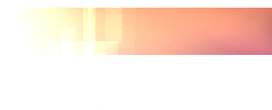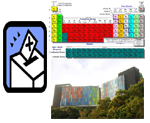

![]() 05 Sep 2006,
Issue 2
05 Sep 2006,
Issue 2


 |

| Vote for the Best Chinese Name for "Alumni Matters" / A Building Inspired by the Periodic Table | |
This is 'E' here again sharing with you interesting stories about alumni affairs and the University! Do you know that the short-listed Chinese names for "Alumni Matters" are unveiled? You may know what a periodic table is, but do you know how it is related to the new kid on the block - the Centralized Science Laboratories Building in CU? |
|
We Need You! Vote for the Best Chinese Name for "Alumni Matters" The short-listed Chinese names for "Alumni Matters" are unveiled! After a careful sorting process, we have identified 5 Chinese names for "Alumni Matters" from more than 250 creative and innovative entries. The 5 names include: Alumni are invited to indicate their preference from the short-listed suggestions. From now on until September 22, participants may vote online the Chinese name of your choice. The name that received the highest number of votes will be used as the Chinese name for Alumni Matters. Vote now! A Building Inspired by the Periodic Table The Centralized Science Laboratories Building, upon its completion towards the end of the year, boasts 70 plus state-of-the-art laboratories capable of handling advanced research for the Science and Medical Faculties and space for the setting up of an additional Level 3 (PC-3 Laboratory). The multi-coloured exterior of the building was inspired by, you guessed it, the periodic table. While the periodic table uses colors to categorize different types of chemical elements, the exterior of the building uses abstract color patterns to symbolize the importance of science to mankind. The story goes that in the initial design, even the names of the elements were to appear on the glass panes, but the idea was abandoned in consideration of the overall design.So what's so special with the colored glass, you say? Well, for one, the colored glass exterior and the laminated glass on the undulating curve of the southern facade can control heat gain and reduce air-conditioning load in the interior. In addition, the high light transmission factor of the glass offers natural light, reducing the need for artificial lighting during day time. Researchers inside the laboratories can also enjoy a panoramic view of Tai Po Road and Tolo Harbour, thereby creating a dynamic and comfortable working environment. As many as the colors on the building are observations on the appearance of it once the hoardings of the building were dismantled. When asked his views on the building, Professor Bernard Lim, President of The Hong Kong Institute of Architects and Professor of Department of Architecture, CUHK, said the design 'gives a sense of energy and it is a good attempt for the University to work on an unconventional design'. Professor Lim is a renowned architect in the profession. He once participated in the research on how the environmental conditions at Amoy Garden led to the spread of SARS. Recently, he has frequently interviewed by the media about the effects of high-rise buildings in West Kowloon on the ventilation of the district. Multi-colored buildings are commonly seen worldwide. Catch a glimpse of this growing international trend in this website of worldwide architectural projects. The periodic table is ubiquitous within the academic discipline of chemistry, providing an extremely useful framework for a number of research projects. The establishment of the Centralized Science Laboratories Building, on the other hand, will complement the University's strategic research developments and enable teachers and students to pursue excellence in advanced and strategic interdisciplinary research projects. |
|
| Top | |
Please send enquiries,
suggestions and contributions to cu.aao@cuhk.edu.hk
Copyright © 2025. Alumni Affairs Office, CUHK
Rm 301, 3/F, John Fulton Centre,
The Chinese University of Hong Kong
Tel: 2609 7861 Fax: 2603 6226
